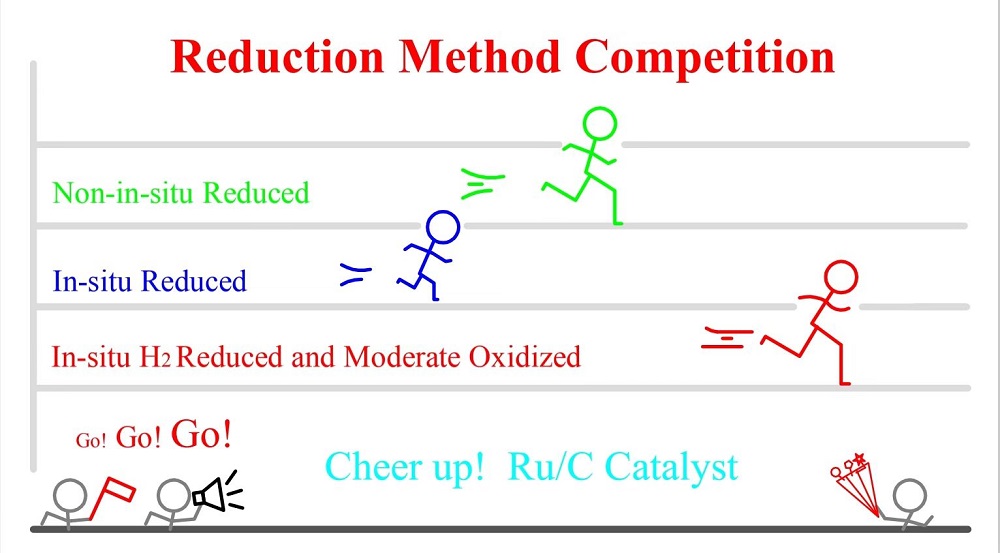To identify the interaction between Ru species and the carbon support, TPR analysis was performed for the carbon support, unreduced Ru/C, Ru/C-n, Ru/C-y, Ru/C-i0, Ru/C-i1 and Ru/C-i2 catalysts. The results are presented in Fig.3. TPR analysis is an ideal tool for examining the reducibility and interaction between the metal species and support, and also to obtain information regarding the active state of solid catalysts [
35]. As shown in Fig.3(a), both the carbon support and the Ru/C-y catalyst presented no reduction peaks, indicating that the reduction temperature of 300 °C can fully reduce the Ru/C catalyst. The unreduced Ru/C catalyst consumed a large amount of H
2 in TPR, and the reduction temperature was higher, which may be related to the large amount of Ru
n+ and Cl species on the catalyst [
36]. As shown in Fig.3(b), two major peaks were observed for Ru/C-n, Ru/C-i1 and Ru/C-i2 catalysts. The reduction peaks observed around 140 °C are reported to be due to the reduction of RuO
x species to Ru
0, or the reduction of Ru(IV) or Ru(III) to Ru (II), corresponding to the easy-to-reduce RuO
x species [
37]. The signals between 175 and 300 °C were due to the reduction of Ru(II) to Ru
0, corresponding to the hard-to-reduce RuO
x species [
38]. By comparing Ru/C-i0, Ru/C-i1 and Ru/C-i2 catalysts, it can be seen that with the increase in oxidation temperature, the amount of H
2 consumption increased, and the reduction peaks gradually moved to high temperature, indicating that the hard-to-reduce RuO
x species were gradually formed. A large amount of RuO
x was found on the Ru/C-i2 catalyst. The formation of the hard-to-reduce RuO
x species indicated too strong metal-support interaction on the catalyst, which may lead to the decrease in catalyst activity.












